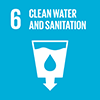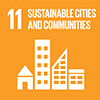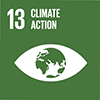June 2022 - You are accessing an old version of our website. The SDGs Voluntary Commitments have been migrated here: https://sdgs.un.org/partnerships
You will be redirected to the new Partnership Platform in 10 seconds.
June 2022 - You are accessing an old version of our website. The SDGs Voluntary Commitments have been migrated here: https://sdgs.un.org/partnerships
You will be redirected to the new Partnership Platform in 10 seconds.
City Water Resilience Approach (CWRA) is a stakeholder-led approach that enables cities, regions, and water companies to take a holistic view of their water systems, inform decision-makers of a strategy to take forward, and collaboratively build resilience to local water challenges. It prompts stakeholders to consider the hydrological context, including the basins, the built infrastructure, and the socio-political and economical context as well as the risks and resilience goals of their water system. In addition to ‘hard engineering’ infrastructure projects, the CWRA promotes nature-based solutions to manage water challenges, and supports a range of ‘soft’ solutions, including improvements to governance (planning, policy & strategies, coordination, finance, regulation, monitoring, etc.), improved communication and demand management. The approach is designed for broad public use and to publicize resilience concepts, measures, design approaches, and investment guidance.
The approach:
CWRA establishes a process for us all to shape a better world where we are improving public health, enhancing communities’ resilience to climate change and other water-related risks, and creating natural and social value through water that results in a more inclusive and sustainable society. It provides a detailed five steps methodology coupled with tools and resources. These steps guide cities in bringing a wide range of stakeholders together to share their perspectives in order to diagnose what helps and hinders the water system to function when faced with water-related shocks and stresses. Through this process they can collaboratively develop and implement water resilience actions and strategies.
The step-by-step process is facilitated by two tools:
1) CWRA's OurWater (https://app.ourwater.city/), is a digital tool that improves governance and knowledge-sharing between stakeholders in the city water system. It helps to improve water governance through coordination and knowledge sharing between actors working in the water system.
2) CWRA through its assessment and planning tool, the City Water Resilience Framework (CWRF), supports city stakeholders to gather information in a structured way and assess current practices, providing cities with a comprehensive, credible, and technically robust means to assess and monitor their water resilience to inform decision-making. This framework will help structure cities’ thinking around water resilience, by guiding assessment across four critical areas of building water resilience, which are: ‘Leadership & Strategy’, ‘Planning and Finance’, ‘Infrastructure and Ecosystem’ and ‘Health and Well-being, with twelve clearly defined goals, and a set of qualitative and quantitative indicators.
The CWRA is built around five key principles:
• Inclusive and transparent:
The workshops bring together diverse stakeholders to develop a shared understanding of the resilience challenge and innovative projects with multiple benefits.
• Systems-based: The system mapping allows cities to take account of the cascading failures through infrastructure systems and with other systems.
• Holistic: The City Water Resilience Framework includes leadership and strategy, planning and finance, infrastructure and ecosystems, and personal, household, and community resilience.
• Action-orientated: The workshops build consensus and support to sustain long-term buy-in and implementation.
• Scalable and global: The Approach is scalable from towns through to megacities.
Water crises - too much, too little and polluted water are already affecting people’s health and wellbeing, devastating economies and threatening lives and livelihoods in many countries around the world. Due to the combined impact of climate change, human action and population growth, a recent UN-endorsed project estimates that global demand for freshwater will exceed supply by 40% in 2030 and many cities. Urban water resilience is fundamental to address many of the water challenges at local level. It will further help achieve several SDGs, for example SDG 6, 11 and 13. CWRA assessment guides cities monitor and make better planning, investments decision in the sector, contributing to improved WASH services (targets 6.1, 6.2) linked to ensuring access to basic services (11.1), municipal and waste management (11.6), protecting the health of people, reducing risk of water-borne diseases (3.1 to 3.9); addressing water scarcity (6.4) linked to reduced impact of water-related disasters (11.5), promote green and public spaces (11.7), ecosystem protection (6.6), support resilience through flood, drought protection (11.5, 13.1); and improved capacity on adaptation, impact reduction and early warning (13.3). \\r\\n\\r\\nCWRA will guide cities achieve urban water resilience. It provides a comprehensive picture of a wide range of factors that impact water management and service provision in cities. It's application in Cape Town helped the stakeholders explore the key themes first presented in their new Water Strategy, which makes a firm commitment to be a water sensitive city by 2040. Action developed through using the CWRA assessment framework i.e. CWRF, provided a pathway for the city stakeholders to achieve these goals. In Miami, it has helped strengthen its Resilient305 Strategy, particularly the water dimension. CWRA is included in the Global Commission on Adaptation (GCA) Water Action Track, which calls for a resilience approach to tackle climate disaster in cities. Under this initiative, CWRA will be applied in three African cities in 2021. These efforts are also part of the 1000 CAN initiative (Accelerating Climate Adaptation in Cities by GCA, WRI, R-Cities, and UN Habitat) announced at the Climate Adaptation Summit in January 2021.\\r\\n\\r\\nFollowing actions are being taken to increase the applicability of CWRA: 1) Adapted the approach to undertake remote assessments to respond to COVID-19 and the new challenge to collaborative work and stakeholder engagement that the pandemic presents. 2) Developed training materials for new partners to implement the CWRA, recognising the scale of the water challenges faced by cities and the need for improved uptake by water professionals. 3) Collaboration with new partners like WRI, universities and others to adapt CWRA for use in Least Developed Countries (LDCs) to help alter their development trajectory
https://www.arup.com/perspectives/city-water-resilience-approach



 Start: 01 August, 2017
Start: 01 August, 2017 Completion: 16 December, 2022
Completion: 16 December, 2022